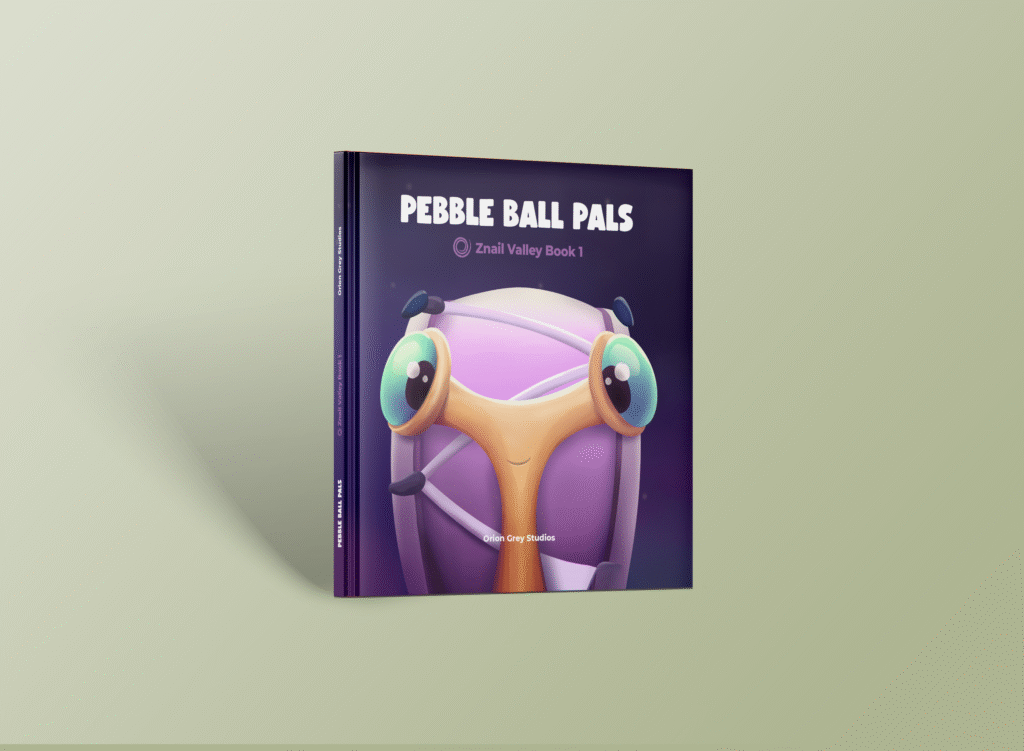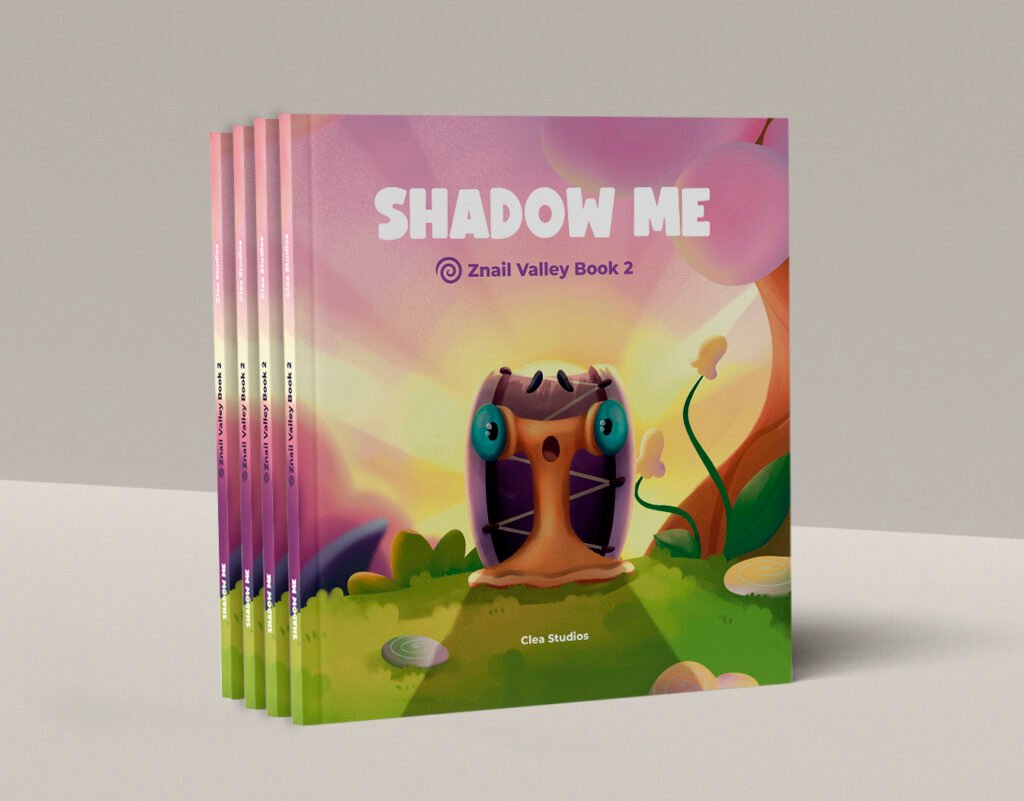In Znail Valley, every story is designed to spark more than just imagination – it’s meant to open up conversations. This page is here to give grown-ups (parents, teachers, librarians, caregivers) a behind-the-scenes look at the themes woven into each book.
Here you’ll find the intent of each book, suggested talking points and questions, and ideas for helping kids connect the story to their own thoughts, feelings, and friendships. Because sometimes, the smallest bugs help us learn the biggest lessons.

The story behind Pebble Ball Pals
“Pebble Ball Pals” was written out of love, and through a really hard time of being different, and struggling to make friends. Lee was made out of a need for representation: how do you help a child through identity when all the examples are binary? How do you talk about feeling excluded and validating the experience? What to look for instead?
Key themes
The biggest question of the book was intended to be: what makes a good friend? How do you find one? Kids are constrained in the environments they can make connections; but they still need guidance on what friendship should look and feel like. Is it really a friend if they keep rejecting you? Excluding you?
The story behind Shadow Me
“Shadow Me” was inspired by having to face the fear of creating. Creating is vulnerable, and requires facing one’s own shadows. Am I good enough? What if no one cares? Venturing into new territory always has risk, and fear of failing follows us all everywhere. What happens when you can’t run away from your own thoughts?


The story behind The Words That Came Back
“The Words That Came Back” happened when a little bug started talking poorly about themselves out loud after making a mistake. Big bug realized that negative self talk happens at all stages of development. That’s when KoKo, the echo specialist, was born.
The story behind What’s That Sound?
“What’s That Sound” was written with two goals in mind. The first goal is to give the reader – the child – a central role. The “sound”, whether it’s in the reader’s head or out loud, is the reader themself. I wanted to send the message that the little reader matters a lot.
The secondary goal was to make it fun, and to explore funny to say out loud sounds in the process.

Key themes
The reader matters! I’d love the discussion to be: what are the signs earlier in the book that the mystery sound is the reader? How can you tell?
I’d also want to know which sounds are the most fun to our budding readers.